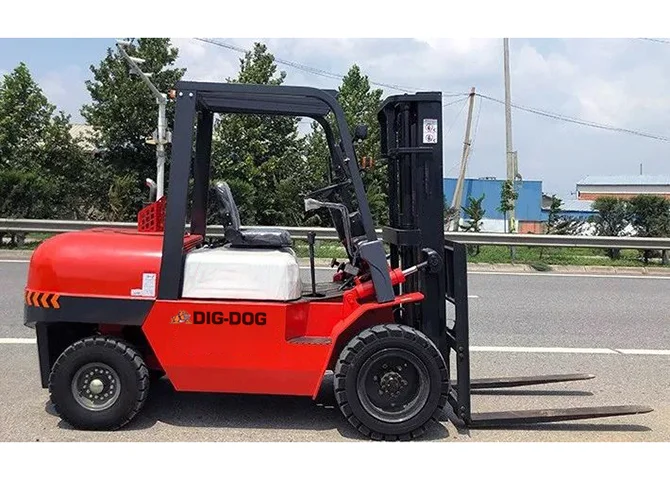Backhoes are small excavation machines with a jointed arm and a digging bucket, and many feature a front loader attachment on the backside. The name refers to the bucket used to pull dirt back before lifting and moving it. 
Backhoes are similar to excavators. They share a general purpose of digging and excavating, but there are three key areas of differences between the two: size, rotation range, and versatility.
The key difference between excavators and backhoes is their sizes Excavators and quite large and heavy, while backhoes are generally smaller and lighter, making them a bit more agile. While excavators are used for heavier duty jobs, the size of backhoes makes them ideal for tasks including:
· Farming
· Medium-scale construction
· Medium-scale excavation
· Loading
· Snow removal
Excavators are able to rotate a full 360-degrees, while backhoes are more limited. A backhoe generally can only turn the loader arm about 200 degrees. This is a significant difference for operators. The range of rotation on an excavator saves time, as it eliminates the need to reposition equipment throughout the day,
Bot excavators and backhoes can be outfitted with numerous different kinds of attachments, making them very versatile machines. The backhoe, though, has a greater range of attachment options.
In addition, backhoes have the advantage of mobility. Since they are wheeled machines, smaller in size than the excavator, they are able to be driven up to 25 miles per hour on public roads. This is incredibly advantageous if they are needed to be moved between job sites.
Excavators have developed immensely since the first hydraulic excavators of the late 1800s, and have continued to evolve. The basic skeleton has stayed consistent, though, with three main components: the undercarriage, the house, and the arm. These components provide better digging power and mobility and allow the excavator to perform its many functions. 
1. The Undercarriage – The undercarriage is the lowest section of the excavator. It is responsible for moving the equipment around an area. The undercarriage includes:
· Tracks
· Track Frames
· Final Drives
· Blade (on some models)
2. The House – Above the undercarriage is the house, containing the power source and operator controls. The house includes:
· Operator cab
· Counterweight
· Engine
· Fuel and hydraulic fluid tanks
3. The Arm – The arm is easily the most identifiable part of an excavator, extending from the body of the excavator, and responsible for the bulk of the physical work. The arm is what provides the up up-and-down and closer-and-further motions. The arm consists of:
· Boom
· Stick
· Bucket
· Attachments
Attachments can be utilized to suit the needs of different jobs These attachments can change the purpose of an excavator and are one of the reseasons that these machines are so versatile. The attachments can include:
· Bucket – The bucket is the most common attachment, and is ideal for digging and scooping, though they can also be used for grading stones and digging trenches.
· Auger – Fast and efficient, augers are used for drilling into the ground. They are powered by hydraulic circuits and can range anywhere between 4 to 50 inches and length, and dig all the way up to 32 feet.
· Breaker – Larger versions of a jackhammer, breakers work great for hammering through hard surfaces such as stone or concrete.
· Thumb – Thumbs are the ideal attachment for when a bucket isn’t big enough. Easy to detach, they work well for items such as tree stumps or large slabs of concrete.
Couplers – Couplers help to maximize the efficiency of a job site. They make it fast and easy to swap out attachments, which can save time and manpower.
Backhoes and excavators are both staples on job sites. They have the shared purpose of digging and excavating, though the slight differences in size, range of rotation, and versatility will help you determine which is best for your specific needs.
 BONOVO Group at INTERMAT 2024 Paris Exhibiton
BONOVO Group at INTERMAT 2024 Paris Exhibiton
 A Ultimate Guide to Clamp Forklifts and Attachments
A Ultimate Guide to Clamp Forklifts and Attachments
 How To Choose The Right Compact Wheel Loader
How To Choose The Right Compact Wheel Loader
 How Much Does a Forklift Weigh?
How Much Does a Forklift Weigh?